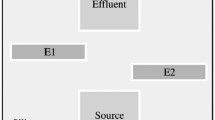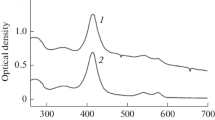Abstract
The specific resistance values for samples of goat, sheep, camel, monkey, baboon, cat and pig blood at 37°C are given for a range of packed-cell volumes extending from 0 to 70%. The relationship is presented in the form p=AeαH, when p is the specific resistance, A and α are constants and H is the packed-cell volume in percent. In addition, values for the change in resistivity with the addition of saline are presented to allow electrical calibration for conductivity cells when saline is used as the indicator in cardiac-output studies.
Sommaire
La valeur de la résistance spécifique à 37° pour des échantillons de sang de chévre ‘de mouton’ de chameau, de singe, de babouin, de chat et de cochon est fournie pour une gamme de volumes de cellules tassées allant de 0 à 70%. La relation est exprimée sous la formep=AeαH, oùp est la résistance spécifique,A et é sont des constantes etH est le pourcentage du volume des cellules tassées. On présente en plus les valeurs des changements de résistance observés par l'addition de solution saline afin de permettre la calibration électrique des cellules de condictivité dans lesquelles une solution saline est utilisée comme indicateur pour les études de rendement cardiaque.
Zusammenfassung
Für mehrere volle Zellvolumen von 0 bis 70% werden die Werte für den spezifischen widerstand des Blutes von Ziegen, Schafen, Kamelen, Affen, Pavianen, Katzen und Schweinen bei 37°C angegeben Das Verhältnis wird in Form vonp=AeαH vorgelegt, wobeip der spezifische Widerstand ist,A and α Konstanten sind undH das prozentuale volle Zellvolumen ist. Ferner werden Werte für einen Wandel des Widerstandes durch Zusatz von Salzlösung angegeben. Dadurch wird die elektrische Eichung von Leitfähigkeitszellen ermoglicht, wenn Salzlösung als Anzeige für Herzleistungsuntersuchungen verwendet wird.
Similar content being viewed by others
References
Burger, H. C. andVan Milaan, J. B. (1943) Measurements of the specific resistance of the human body to direct current.Acta Med. Scand.114, 584–607.
Fricke, H. (1927) The electric capacity of suspensions with special reference to blood.J. Gen. Physiol.9, 137–152.
Geddes, L. A. (1973) Measurement of electrolytic resistivity and electrode-electrolyte impedance with a variable-length conductivity cell.Chem. Instrum.4, 157–168.
Geddes, L. A. andBaker, L. E. (1967) The specific resistance of biological material.Med. & Biol. Eng.5, 271–293.
Geddes, L. A. and daCosta, C. P. (1973) The specific resistance of canine blood at body temperature.IEE Trans.BME-20, 51–53.
Geddes, L. A., Peery, E. andSteinberg, R. (1974) Cardiac output using an electrically calibrated flow-through conductivity cell.J. Appl. Physiol. In press.
Geddes, L. A. andSadler, C. (1973) The specific resistance of blood at body temperature.Med. & Biol. Eng.2, 336–339.
Geddes, L. A., Tacker, W. A. andRosborough, J. P. (1974) Cardiac output in an anaesthetized dromedary.Amer. Vet. Res.35, 131–133.
Hirsch, F. G., Texter, E. C., Wood, L. A., Ballard, W. C., Horan, F. E. andWright, I. S. (1950) The electrical conductivity of blood.Blood.5, 1017–1035.
Kinnen, E., Kubicek, W., Hill, P. andTurton, G. (1964) Thoracic cage impedance measurement.SAM Tech. Rep.TDR, 64–65, School of Aerospace Medicine, Brooks AFB. San Antonio, Texas, USA.
Okada, R. H. andSchwan, H. P. (1960) An electrical method to determine Haematocrits.IRE Trans.ME-7, 188–192.
Rosenthal, R. L. andTobias, C. W. (1968) Measurement of the electric resistance of human blood.J. Lab. Clin. Med.13, 1110–1122.
Schwan, H. P. (1963) Determination of biological impedance.in Physical Technique in Biological Research.W. Nastuk (Ed.) (Academic Press, New York) vol. VIB.
Schwan, H. P. (1949) Eine elekrtische Methode zur Bestimmung der Erythrocytenzahl.Pfluegers Archiv.251, 550–558.
Schwan, H. P. (1941). Uber die Niederfrequenzleitfahigkeit von blut and Blutserum bei verschiedenen Temperaturen.Z. Exp. Med.109, 531–719.
Sigman, E., Kolin, A., Katz, L. N. andJochim, K. (1937) Effect of motion on the electrical conductivity of the blood.Amer. J. Physiol.118, 708–719.
Velick, S. andGorin, M. (1940) The electrical conductance of suspensions of ellipsoids and its relation to the study of avian erythrocytes.J. Gen. Physiol.13, 755–771.
Author information
Authors and Affiliations
Rights and permissions
About this article
Cite this article
Geddes, L.A., Kidder, H. Specific resistance of blood at body temperature II. Med. & biol. Engng. 14, 180–185 (1976). https://doi.org/10.1007/BF02478745
Received:
Accepted:
Issue Date:
DOI: https://doi.org/10.1007/BF02478745




